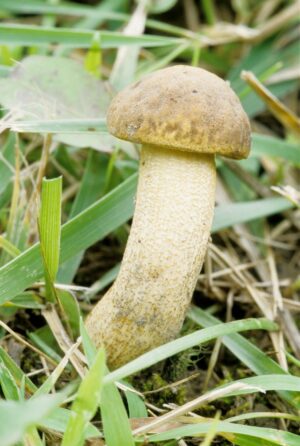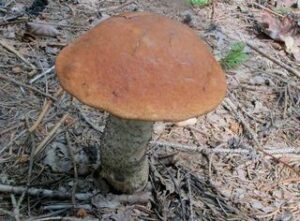5. Found in W. Va. or the Central Appalachians
Showing 33–48 of 104 results
-
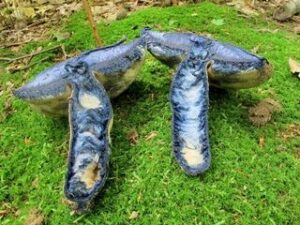
Gyroporus cyanescens (“Bluing Bolete”)
Brittle white cap flesh (dark brown zone by skin) stains indigo blue, resolving to creamy buff. Stem flesh blues stronger. Cap-colored stem is hollow & stuffed with “cotton.”
Read more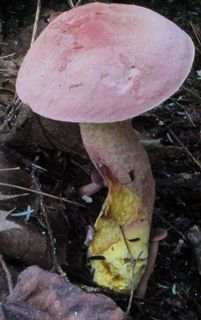
Harrya chromapes (“Chrome Footed Bolete”)
White/pink stem has a bright yellow foot, w/ pink-rose dots or scabers. Rose/pink cap fades tannish w/age & can be slightly viscid.
Read more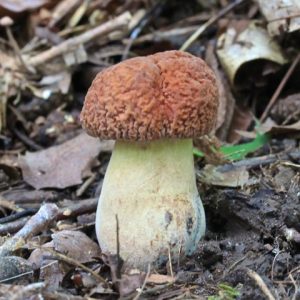
Hemileccinum hortonii (“Corrugated Bolete”)
Heavily corrugated red/brown/tan cap. Nice, dense texture. Yellow pores may blue slowly & erratically, & darken w/age.
Read more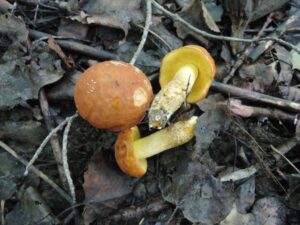
Hemileccinum subglabripes
Think hortonii with a smooth or barely-wrinkled red-brown cap. Cap flesh may taste slightly acidic, & may blue, but rarely.
Read more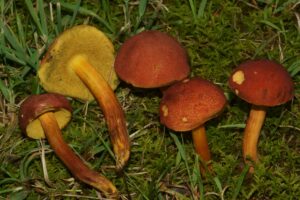
Hortiboletus campestris (“Field Bolete”)
Found in lawns and roadsides. Yellow stem- & paler cap-flesh both stain greenish blue. Yellow pores age to greenish- or olive-yellow. Never gets bigger than 1-1/2″ across.
Read more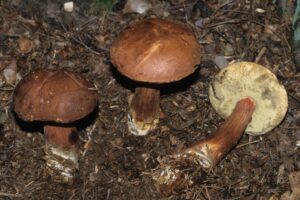
Imleria badia (“Bay Bolete”)
Bay-brown cap, often flat or convex. Yellow pores may age greenish, bruise blue/gray green, & are depressed by stem. White cap flesh may bruise pink or blue but only by the tubes.
Read more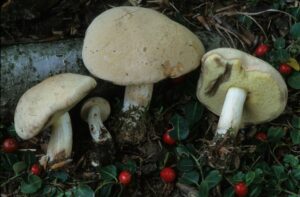
Imleria pallida (“Pallid Bolete”)
White cap browns with age. White pores age yellow to greenish-yellow and bruise an odd gray-green that fades to grayish brown.
Read more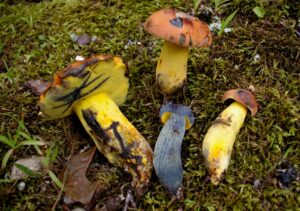
Lanmaoa carminipora
Short tubes end in yellow pores that quickly blue, resolving to brown. Pale yellow cap flesh quickly blues. Stem yellow above, carmine-red below.
Read more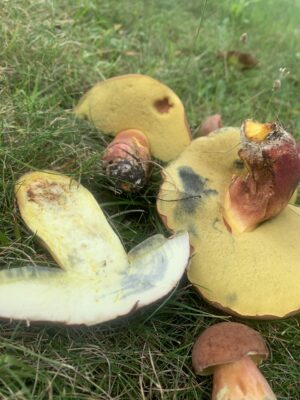
Lanmaoa fallax (nom. prov.)
Stout red-and-yellow. White mycelium. Brick- to pinkish-red cap that fades brown w/age. Little to no bouillon smell. Pores and skin often bruise blue.
Read more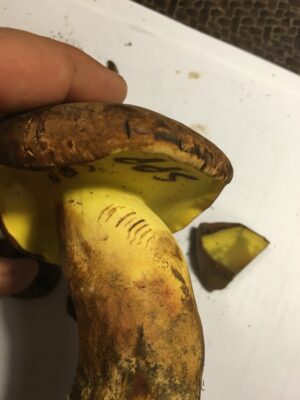
Lanmaoa pseudosensibilis
Yellow pores age brownish & bruise blue before slowly fading to brown. Yellow flesh stains blue.
Read more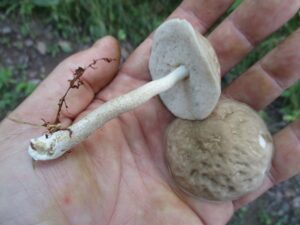
Leccinum albellum
White/buff/pink/gray cap is usually quite wrinkled, a bit pointy, & cracks/fissures w/ age. Tubes are notably depressed at the skinny stem.
Read more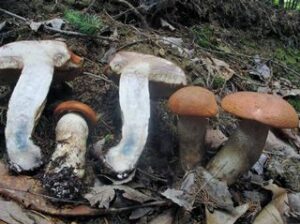
Leccinum aurantiacum (placeholder for deciduous mates)
Bright orange/red cap. White pores age toward brown, & stain brown or red-brown. Flesh stains red, darkening to purple-gray or black.
Read more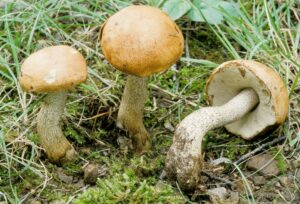
Leccinum insigne (placeholder for birch/aspen mates)
Brown-on-white scaber stem. White pores age to yellow-brown & DNS. White cap flesh stains purple-gray & resolves black – no red stage. Likes aspen & birch.
Read more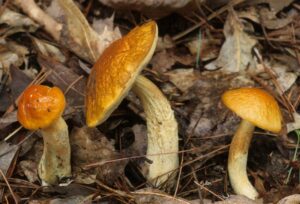
Leccinum longicurvipes
Viscid & almost-corrugated cap is a shade of brown (red-, orange-, yellow- or plain). Stem often long & curved. Flesh often stains pinkish red, but not always.
